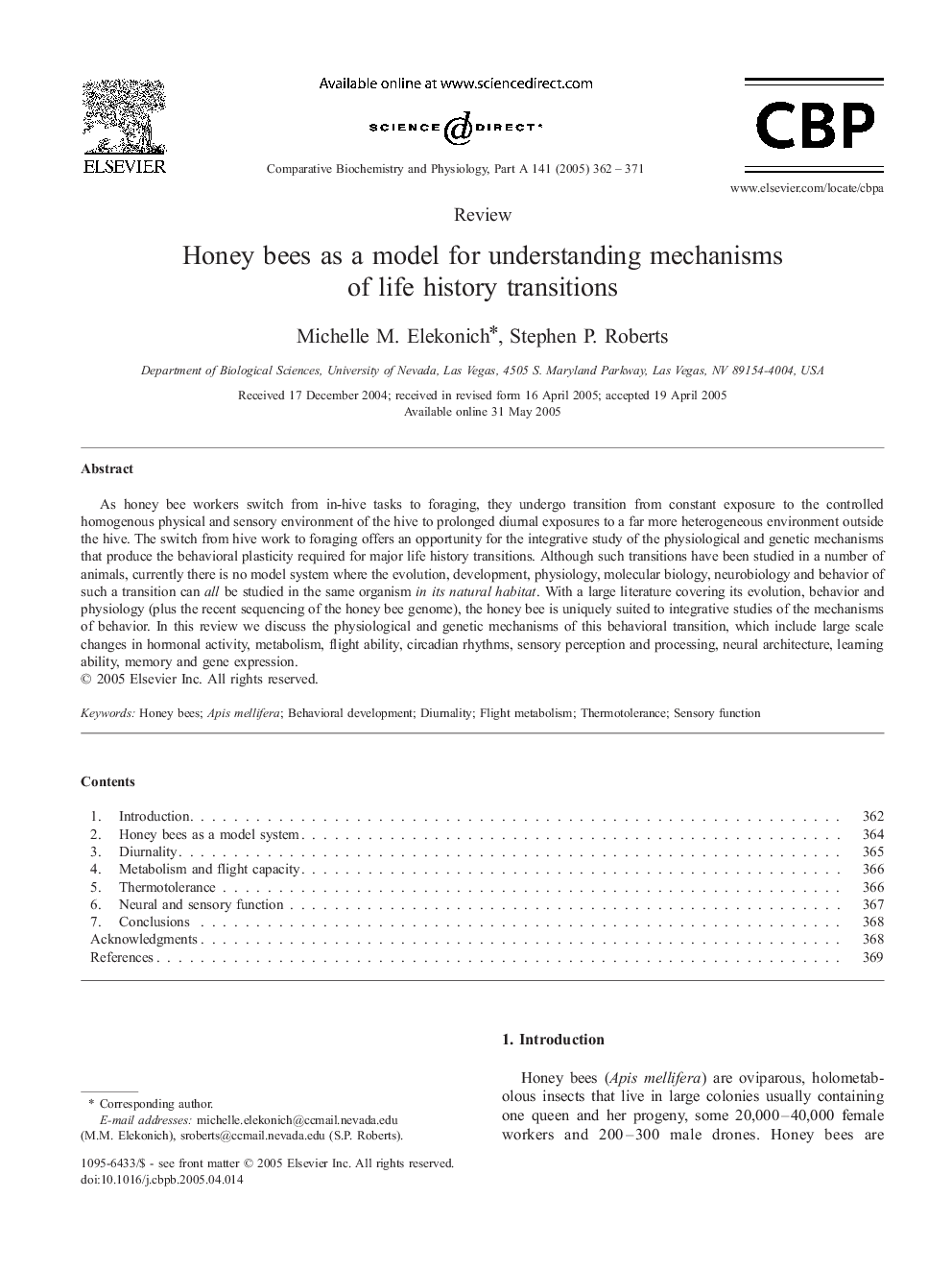| کد مقاله | کد نشریه | سال انتشار | مقاله انگلیسی | نسخه تمام متن |
|---|---|---|---|---|
| 10819384 | 1060382 | 2005 | 10 صفحه PDF | دانلود رایگان |
عنوان انگلیسی مقاله ISI
Honey bees as a model for understanding mechanisms of life history transitions
دانلود مقاله + سفارش ترجمه
دانلود مقاله ISI انگلیسی
رایگان برای ایرانیان
کلمات کلیدی
موضوعات مرتبط
علوم زیستی و بیوفناوری
بیوشیمی، ژنتیک و زیست شناسی مولکولی
زیست شیمی
پیش نمایش صفحه اول مقاله

چکیده انگلیسی
As honey bee workers switch from in-hive tasks to foraging, they undergo transition from constant exposure to the controlled homogenous physical and sensory environment of the hive to prolonged diurnal exposures to a far more heterogeneous environment outside the hive. The switch from hive work to foraging offers an opportunity for the integrative study of the physiological and genetic mechanisms that produce the behavioral plasticity required for major life history transitions. Although such transitions have been studied in a number of animals, currently there is no model system where the evolution, development, physiology, molecular biology, neurobiology and behavior of such a transition can all be studied in the same organism in its natural habitat. With a large literature covering its evolution, behavior and physiology (plus the recent sequencing of the honey bee genome), the honey bee is uniquely suited to integrative studies of the mechanisms of behavior. In this review we discuss the physiological and genetic mechanisms of this behavioral transition, which include large scale changes in hormonal activity, metabolism, flight ability, circadian rhythms, sensory perception and processing, neural architecture, learning ability, memory and gene expression.
ناشر
Database: Elsevier - ScienceDirect (ساینس دایرکت)
Journal: Comparative Biochemistry and Physiology Part A: Molecular & Integrative Physiology - Volume 141, Issue 4, August 2005, Pages 362-371
Journal: Comparative Biochemistry and Physiology Part A: Molecular & Integrative Physiology - Volume 141, Issue 4, August 2005, Pages 362-371
نویسندگان
Michelle M. Elekonich, Stephen P. Roberts,